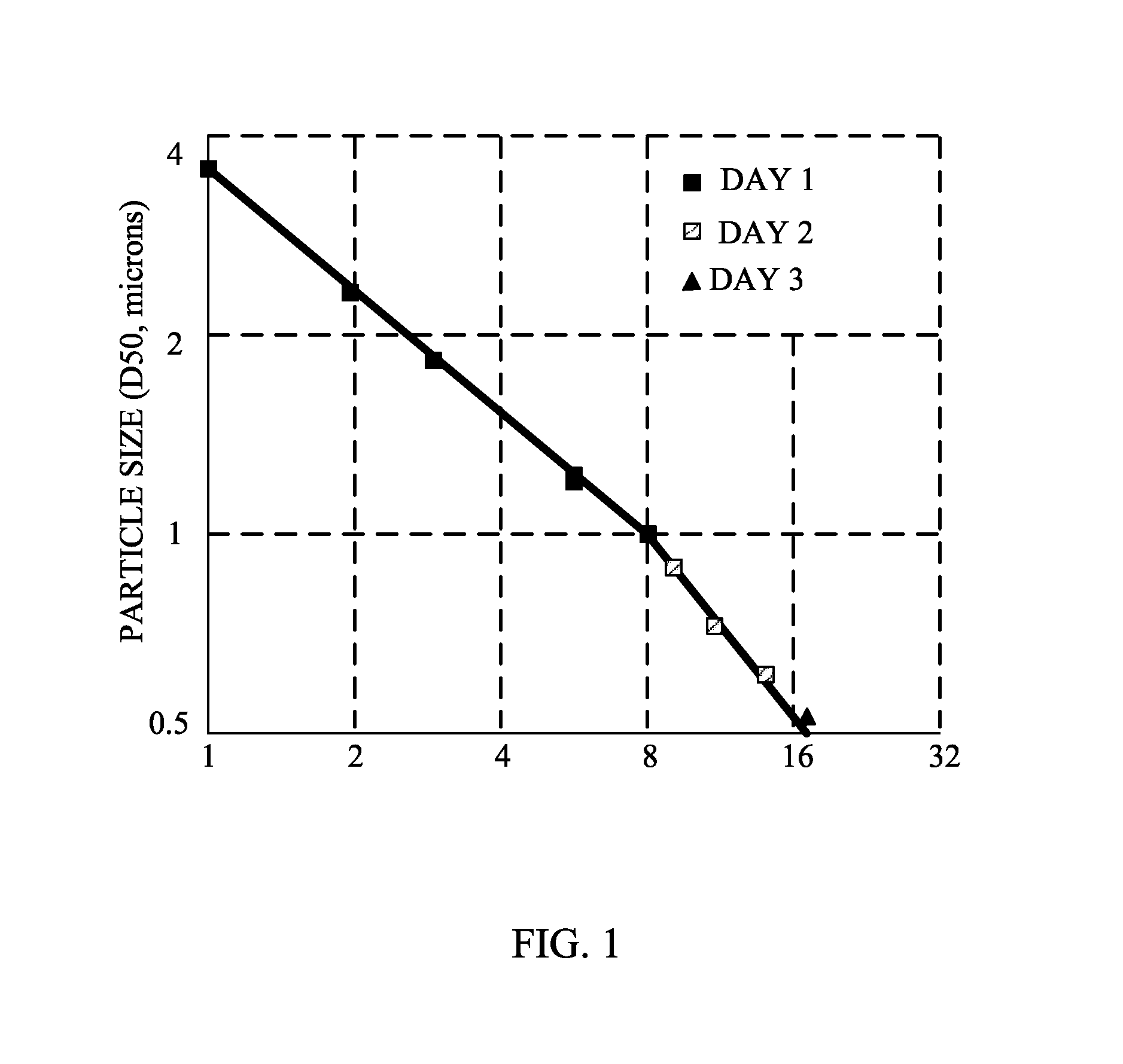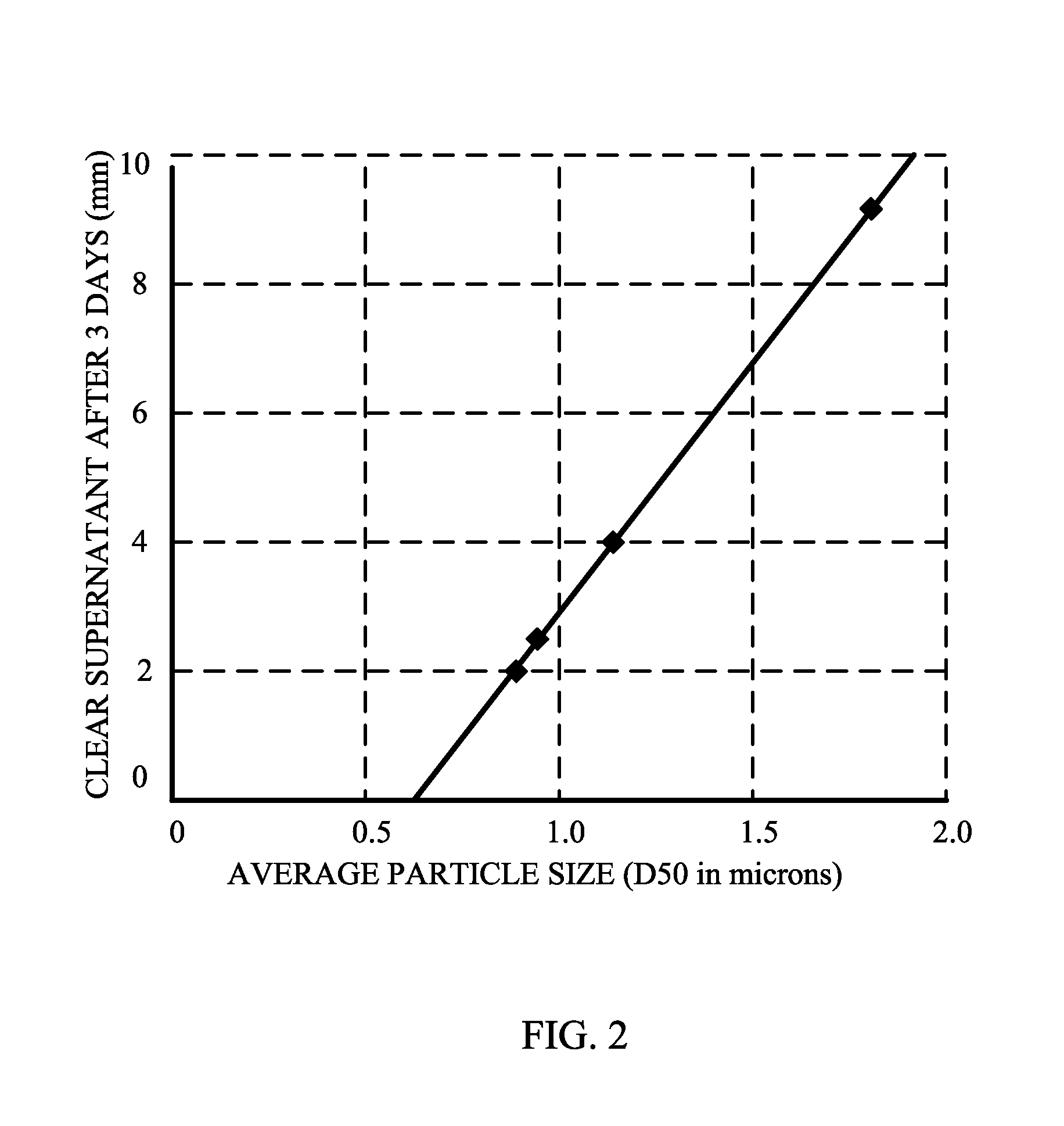Ceramic inkjet inks
a technology of inkjet printing and ceramics, applied in the field of inkjet inks, can solve the problems of difficult inkjet printing formulation, inability to stabilize particle dispersions, and printers are required to include expensive and complex systems, and achieve low sedimentation rate, prevent sedimentation, and high viscosity
- Summary
- Abstract
- Description
- Claims
- Application Information
AI Technical Summary
Benefits of technology
Problems solved by technology
Method used
Image
Examples
Embodiment Construction
[0010]As it was indicated above, inkjet inks for printing on glass and ceramics should have consistent properties within the required specification. Variation in any parameter could affect color intensity and definition (and therefore quality). One aspect to maintaining the density, viscosity and surface tension parameters of inks is keeping them at a constant temperature. This is desired in all cases, including pigment particle suspensions and organometallic compounds both for organic solvents and water. In some printers the entire ink reservoirs are kept at a constant temperature whereas in others just the small nozzle chambers or only the nozzles themselves. In some printers inks are continuously stirred and flow in a cycle from the main reservoir to the small chambers (and nozzles in some cases) and back to the main reservoir again. Operation of some printers includes a washing procedure and steps are scheduled, all without any break in the printing process. Therefore, stable in...
PUM
| Property | Measurement | Unit |
|---|---|---|
| size | aaaaa | aaaaa |
| size | aaaaa | aaaaa |
| density | aaaaa | aaaaa |
Abstract
Description
Claims
Application Information
 Login to View More
Login to View More - R&D
- Intellectual Property
- Life Sciences
- Materials
- Tech Scout
- Unparalleled Data Quality
- Higher Quality Content
- 60% Fewer Hallucinations
Browse by: Latest US Patents, China's latest patents, Technical Efficacy Thesaurus, Application Domain, Technology Topic, Popular Technical Reports.
© 2025 PatSnap. All rights reserved.Legal|Privacy policy|Modern Slavery Act Transparency Statement|Sitemap|About US| Contact US: help@patsnap.com


